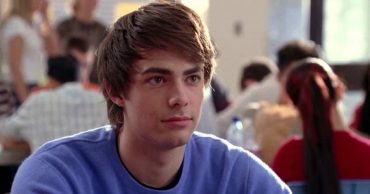Ursula Le Guin was a legend when it came to speculative fiction. For example, she was the one who wrote the Earthsea series, which is set on a collection of hundreds and hundreds of islands surrounded by uncharted waters. Furthermore, she was the one who wrote The Left Hand of Darkness, which won not just the Hugo for Best Novel but also the Nebula for Best Novel. Summed up, Le Guin was a much beloved novelist, which is why her recent passing at the age of 88 came as such unfortunate news to a lot of fans of speculative fiction out there.
Like most people who wrote speculative fiction, Le Guin was influenced by the legends who preceded her. For example, The Lord of the Rings had a huge impact on her when she read through it. However, Le Guin had no interest in becoming one of the Tolkien imitators that sprouted up like mushrooms. Instead, she was fascinated by the full extent of what was possible with fantasy, which she hadn’t realized until she had read through The Lord of the Rings. Likewise, it is interesting to note that Le Guin became interested in science fiction when she read the works of Theodore Sturgeon and Cordwainer Smith, which ignited in her a desire to create something just as weird and wonderful. As a result, it should come as no surprise to learn that Le Guin’s own works were quite distinctive in nature, with examples ranging from significant influence from the social sciences to contributing to the rise of post-modern anarchism. Something that should enable her works to stand out from other speculative fiction should they be translated to the screen.
Of course, the natural choices for a screen adaptation would be the Earthsea series and The Left Hand of Darkness. The Earthsea series encompasses a number of stories, meaning that it offers a wide range of possibilities for what an Earthsea adaptation would look like. One example would be the bildungsroman, though it is interesting to note that there are not one but two Earthsea novels with such stories centered around two separate but nonetheless connected characters. In contrast, another example would be that of The Farthest Shore, which featured an archmage and his princely companion heading out to seek the answer to why the world as a whole seems to be sickening by the moment. Unlike the Earthsea series, The Left Hand of Darkness would be much more focused in nature because it is a single novel centered around a man from Earth who has been tasked with inviting the world of Gethen to a coalition of humanoid species, which is complicated by the fact that he doesn’t quite understand the societies that can be found on the planet.
With that said, it should come as no surprise to learn that Le Guin’s works have been adapted for the screen before. For example, the Earthsea series has had a number of adaptations, while The Left Hand of Darkness has been adapted twice as well. Unfortunately, Le Guin had notoriously bad luck when it came to adaptations of her works, which is why she approved of none of them save for the first adaptation of The Left Hand of Darkness. This is unsurprising considering how her works were treated, with an excellent example being how the miniseries called Legend of Earthsea had an all-white cast when Le Guin had intentionally used a cast of characters with either red, brown, or black skin for the purpose of going against assumptions of what a fantasy world would look like. Hopefully, if her works are adapted once more in the future, they will be treated with greater respect.
 Follow Us
Follow Us



